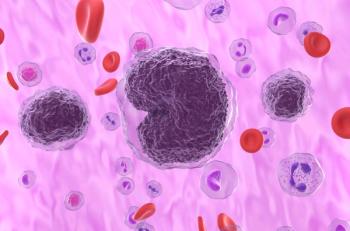
Patients With Systemic Lupus Erythematosus Have Higher Cardiometabolic Risk for CVD
Researchers explored the risk of cardiovascular disease (CVD) as it relates to factors like excess weight, disease evolution time, and clinical activity.
Patients with systemic
The group compared 158 patients with SLE and 123 healthy patients, assessing both biochemical and cardiometabolic risk factors.
“The risk of developing clinical CVD and sub-clinical atherosclerosis has been described increased in SLE; this increase is not fully explained by traditional cardiovascular risk factors such as smoking, hypertension, and elevated cholesterol,” explained the researchers. “Epidemiological studies have shown that patients with systemic autoimmune diseases present a higher incidence of atherosclerosis and CVD risk, and hyperlipidemia accelerates autoimmune diseases in humans and animal models.”
What the researchers observed in their study was that their cohort of patients with SLE displayed a higher rate of dyslipidemia, which is in line with previous research indicating that between 50% and 85% of pediatric patients with SLE have dyslipidemia.
The dyslipidemia observed in the current study was characterized by a higher rate of high low-density lipoprotein-cholesterol (LDL-C)—a known biomarker of general CVD risk—and low high-density lipoprotein-cholesterol (HDL-C) levels. According to the researchers these patients had higher CVD risk as measured by cardiometabolic indexes such as Castelli and Kannel Index.
“According to our findings, SLE patients present high LDL-C levels, and low levels of HDL-C, considered as ‘the lupus lipoprotein pattern,” wrote the researchers. “Low HDL-C is one of the most prevalent dyslipidemia indicators observed in SLE patients, including pediatric populations.”
While there were not observed differences between oxidized LDL serum levels between the 2 groups, the researchers did observe significantly higher titers of anti-oxidized LDL antibodies in patients with SLE.
CVD risk also varied within the cohort of patients with SLE. Those who had excess weight (body mass index ≥25 kg/m2)— a traditional factor associated with higher glucose serum levels, dyslipidemia, and pro-inflammatory status in patients with SLE—exhibited significantly higher high sensitivity-C reactive protein serum levels, lower serum levels of soluble CD36, and higher disease evolution time compared with patients with SLE who did not have excess weight.
According to the researchers, “When we evaluated the cardiometabolic risk variables according to the presence of excess weight and the disease evolution time, we observed significantly higher levels of glucose, [total cholesterol] and [triglycerides] serum levels, as well as lower serum HDL-C, in SLE patients with excess weight and with a disease evolution time ≥ 3 years.”
Reference
López B, Meza Meza M, Parra-Rojas, et al. Association of cardiometabolic risk status with clinical activity and damage in systemic lupus erythematosus patients: A cross-sectional study. J Clin Immunol. Published online November 21, 2020. doi:10.1016/j.clim.2020.108637.
Newsletter
Stay ahead of policy, cost, and value—subscribe to AJMC for expert insights at the intersection of clinical care and health economics.













































